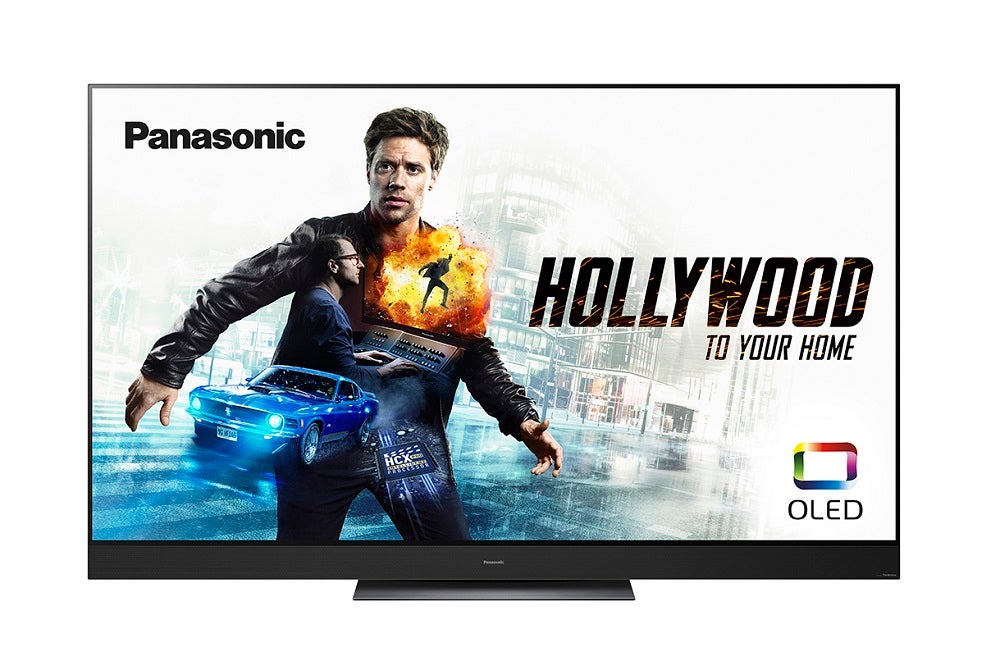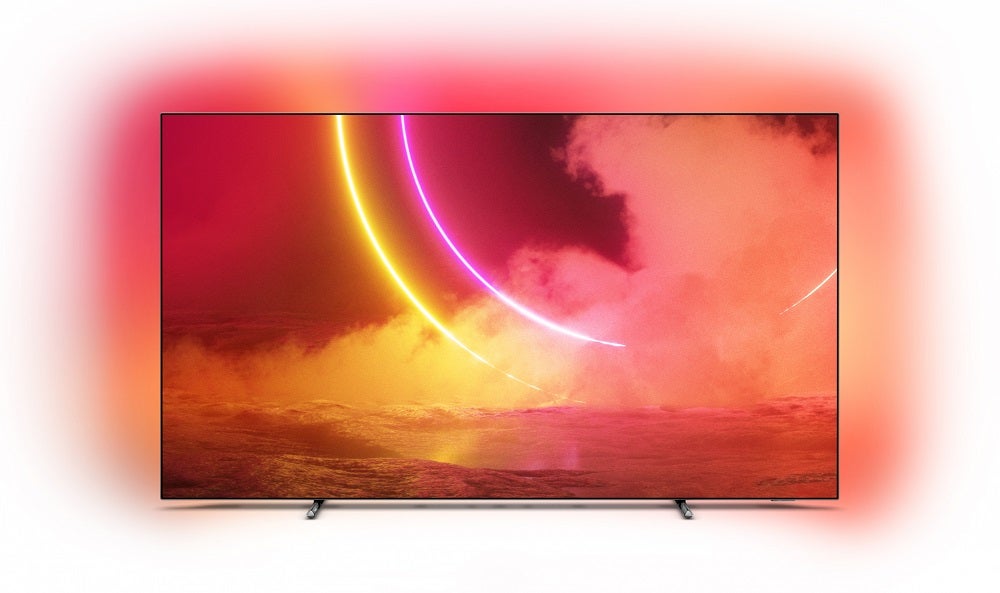LG OLED55BX Review
For next-gen gamers, LG's entry-level OLED is the most affordable option
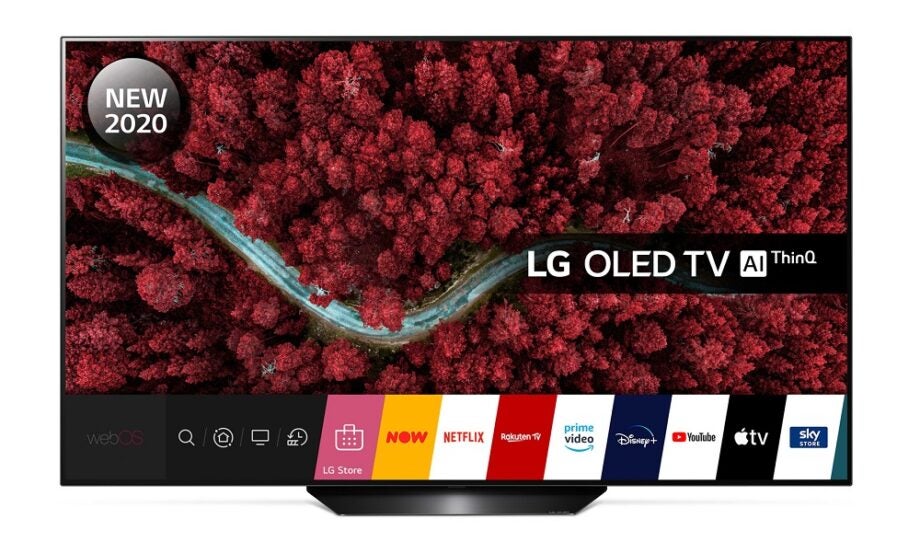

Verdict
The cheapest OLED model in LG’s 2020 range is too good to miss. Top-notch image quality, a powerhouse smart platform and game-friendly spec make it a great buy
Pros
- Superior gaming connectivity
- Brilliant value
Cons
- No Freeview Play
- Presets favour dark-room viewing
Key Specifications
- Review Price: £1199
- Dolby Vision IQ, HDR10, HLG
- Filmmaker Mode
- Dolby Atmos pass through
- Dimensions: 1228 x 706 x 46.9mm (WHD)
The LG BX line is the Korean brand’s OLED honeypot flatscreen, priced to shift with a specification that’s only slightly denuded compared to its CX stablemates.
It sports a third-gen Alpha 7 processor (sibling LG screens use Alpha 9 picture-processing silicon), albeit with AI smarts to enhance clarity and improve the user experience.
LG’s much-lauded webOS smart platform enjoys an AI upgrade and comes with a full fist of streaming services, but there’s no Freeview Play. Consequently, the BX lacks key UK catch-up TV apps, although iPlayer is on board.
Price and availability
The OLED55BX6LB reviewed here sells for an RRP of £1199/$1199/€1799/CAD$1799/AUD$2995.
It’s also available in 65-inches (OLED65BX6LB), priced around £500 more.
Design
-
Good looking set
-
High Frame Rate for game consoles
-
Magic Remote control
Part razor-thin panel, part backpack (the latter home to electronics and inputs), the LG BX is undeniably good-looking. Its ultra-thin bezel barely frames the image, presented on a central, matching pedestal stand. The look should coordinate with any furniture or interior decor.
The BX has four HDMIs. Inputs 3 and 4 are v2.1 and support 4K@120Hz (40Gbps at 10-bit 4:4:4) to make the most of the PlayStation 5 and Xbox Series X. The remaining two HDMIs are standard 8-bit 4K/60P ports.

There’s also Nvidia G-Sync compatibility, VRR to combat frame tearing, and an ALLM game mode. All HDMIs support AMD FreeSync Premium, too. HDMI 3 is eARC/ARC enabled.
The BX ships with the latest iteration of LG’s cursor-based Magic Remote control; a Bluetooth pointer with thumbwheel control and dedicated buttons for Netflix, Prime Video and Rakuten (accessed via a Movies button).
Features
-
No Freeview Play (but some catch-up apps are present)
-
Lots of smart features
-
AI modes of sound and picture
While the lack of Freeview Play – and the subsequent absence of all the usual catch-up TV apps – rather dents the BX’s mainstream appeal, it’s easy to remedy the omission with a media streamer or TV box.
That said, LG’s webOS remains a powerful smart platform, albeit one that’s now slightly cumbersome to use. Content, settings and smart functions can be accessed from a double-stacked launch bar at the bottom of the screen, or the new smart home Dashboard.
When it comes to smart connectivity, there’s no difference between the BX and models higher up the range. ThinQ AI implementation includes support for digital assistants should you want basic voice control functionality. There’s also Apple AirPlay 2 and HomeKit integration.
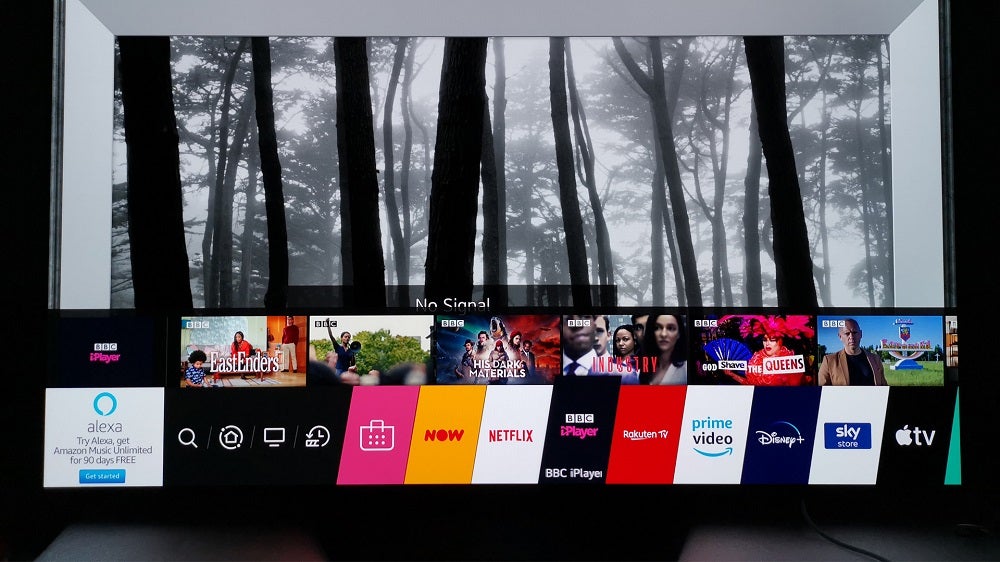
Streaming apps available include Now TV, Disney+, Apple TV, Sky Store, BritBox, Twitch and YouTube.
As with the rest of LG’s 2020 OLEDs, the set features Adaptive Audio and AI Picture mode (accessed via an AI Service menu), which use machine-learning techniques to optimise performance. The AI sound processing is only applicable to the internal speaker, and doesn’t transfer to a soundbar or external device.
There’s also an AI smart content option, able to make recommendations based on your viewing history and app usage. We’d suggest leaving all of these AI features on.
Picture quality
-
Gets the step down Alpha 7 processor
-
Better in low light environments
-
Delivers very good HDR highlights
The BX may ostensibly be an “entry-level” LG OLED set, but it’s still better specified – at least when it comes to next-gen gaming – than OLED rivals costing significantly more.
While 4K@120fps has yet to prove itself as a display option, having it available will certainly be welcomed by buyers eager to tick boxes.
The Alpha 7 processor doesn’t compare with what the Alpha 9 is able to deliver in terms of refinement and finesse. But without a side-by-side comparison, we certainly didn’t feel short-changed; its imagery is balanced and filmic – and when you’re gaming or engrossed in a movie, differential subtleties don’t amount to a hill of beans.
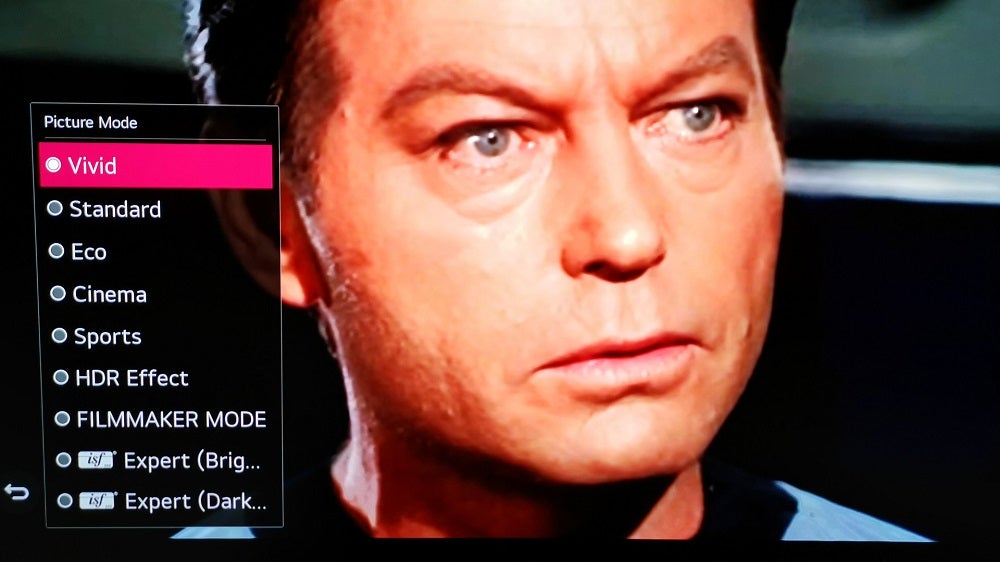
As is LG’s wont, there’s a wide variety of picture modes to choose from – Vivid, Standard, Eco, Cinema, Sports, HDR effect, Filmmaker mode, ISF Expert Bright Room and Dark Room – but relatively few that are likely to please if you watch with some ambient lighting. Standard and Eco would be our default settings for most content, at least in rooms that aren’t shy of a few bulbs.
That said, the TV has Dolby Vision IQ, which is regular Dolby Vision modified to suit changing ambient lighting conditions. There’s no IQ labelling, but if you select the Dolby Vision Cinema Home preset, it engages the TV’s AI Brightness Control function, which uses a light sensor to assess room brightness and adjust the picture accordingly.
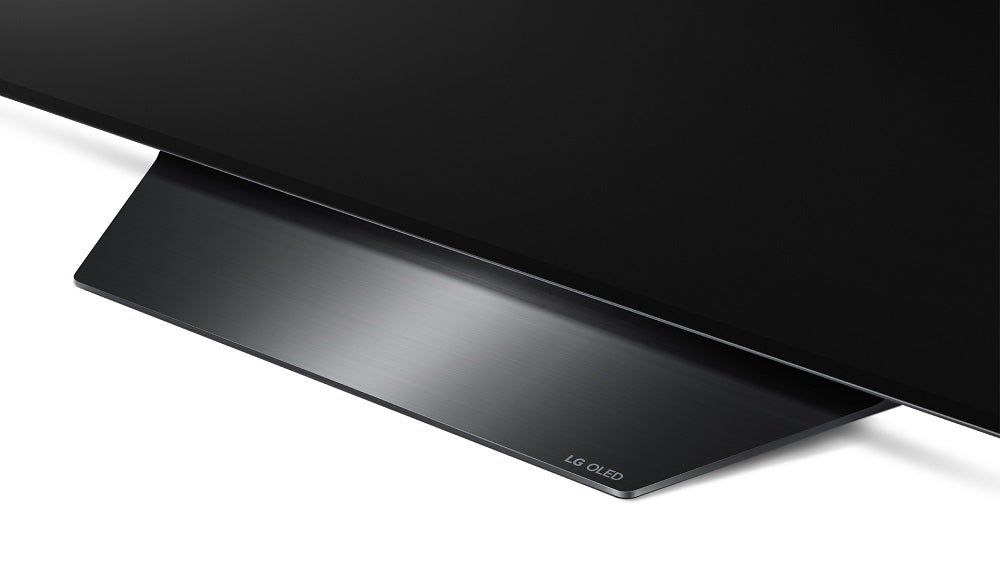
Overall HDR performance is good. Peak brightness was measured at just over 600 nits (cd/m2), using a 5% testing window. However, performance drops considerably when measured with a larger 10% patch. This tells us the BX is perfectly fine delivering small, dramatic, transient highlights (fireworks, visual effects), but could dim considerably when an image features a larger HDR expanse (potentially sports coverage, with partially lit stadiums).
The set’s near-black performance is subjectively excellent, the Alpha 7 Intelligent Processor doing a terrific job of presenting detail and texture. Images are blisteringly sharp. Colour fidelity, too, is outstanding.
Audio quality
-
Weighty output for casual viewing
The BX doesn’t disgrace itself sonically, either. Its output is weighty enough for casual viewing. While the downward-firing sound system on the BX is unequivocally stereo, there’s an option to pass through Dolby Atmos to a waiting soundbar or home cinema system, so better sound can be unlocked from apps such as Netflix and Prime Video.
The set has 40W of claimed amplification on board, in a simple 2.2 arrangement. It’s comparable to what we’ve heard on the CX models.
You should buy it if…
-
You’re a gamer
If you’re a gamer with your sights set on OLED, then without question. LG currently enjoys something of a monopoly when it comes to OLED displays aimed at discerning gamers, and the BX delivers with a formidably advanced specification for a great price.
-
You want an affordable OLED
Overall image quality is high, with a solid HDR performance when it comes to fleeting specular highlights – and the BX looks terrific with 4K HDR movie content.
You shouldn’t buy it if
-
If you want Freeview Play
For mainstream viewers, the lack of everyday catch-up services is disappointing. While some apps have apps have been added, others are still AWOL
-
You watch HDR content in bright rooms
The BX OLED’s presets are much more suited to dark rooms over bright rooms. So when watching HDR films on this TV, remember to keep the lights low.
FAQs
Yes, the LG OLED55BX supports voice control.
No, the LG OLED55BX does not have Freeview Play.
The LG OLED55BX supports Dolby Vision IQ, HDR10 andHLG formats.
Specifications
Jargon buster
Dolby Vision
Dolby Vision is a variant of HDR, adding a layer of dynamic metadata to the core HDR signal. This dynamic metadata carries scene-by-scene (or frame-by-frame) instructions from content creators on how a TV should present the images to improve everything from brightness to contrast, detailing and colour reproduction.
HLG (Hybrid-Log Gamma)
HLG is a HDR format co-developed by the BBC and Japanese national broadcaster NHK for transmission of broadcast and live streamed content in HDR. It’s backwards compatible with SDR transmission standards, enabling people without a HDR TV to receive the same feed but downsampled.
OLED
Organic Light Emitting Diode is panel technology that allows each individual pixel to produce light rather than relying on a backlight. This enables the screen to accurately display blacks by turning off the pixel, resulting in improved contrast compared to conventional LCD panels.
Filmmaker Mode
Filmmaker Mode is a picture mode supported by some TV manufacturers that disables post-processing features (e.g. motion smoothing), and preserves the correct aspect ratios, colours and frame rates that respects the original author’s creative intent.
Upscaling
Upscaling refers to the process whereby a TV receives an image lower than its native resolution and fills in the missing information to create an image. Upscaling effectively guesses which pixels go where to make up the new image. The better the upscaler, the better the resulting image and with the advent of artificial intelligence, it has helped to make for more sophisticated guesses.
eARC
eARC (Enhanced Audio Return Channel) is the update to ARC and it boosts the bandwidth and speed, making room for object-based audio surround formats such as DTS:X and Dolby Atmos to be sent directly to an AV receiver/soundbar.
Dolby Vision IQ
Dolby Vision IQ is an advanced version of the standard Dolby Vision signal. It uses the metadata within its own HDR signal in conjunction with a TV’s light sensor to detect how bright or how dark a room is in order to optimise the picture quality so content retains consistent luminance (brightness) and detail no matter how bright or dark the room is.

